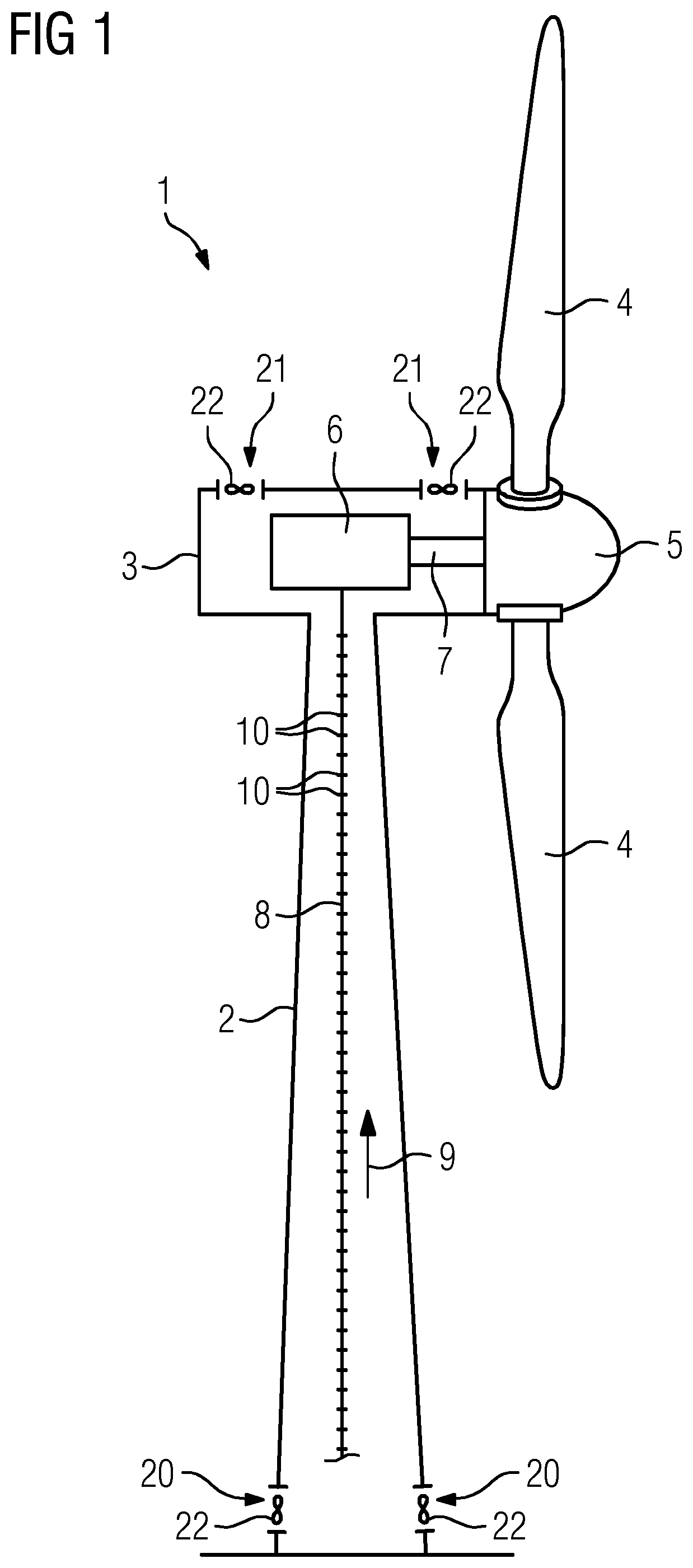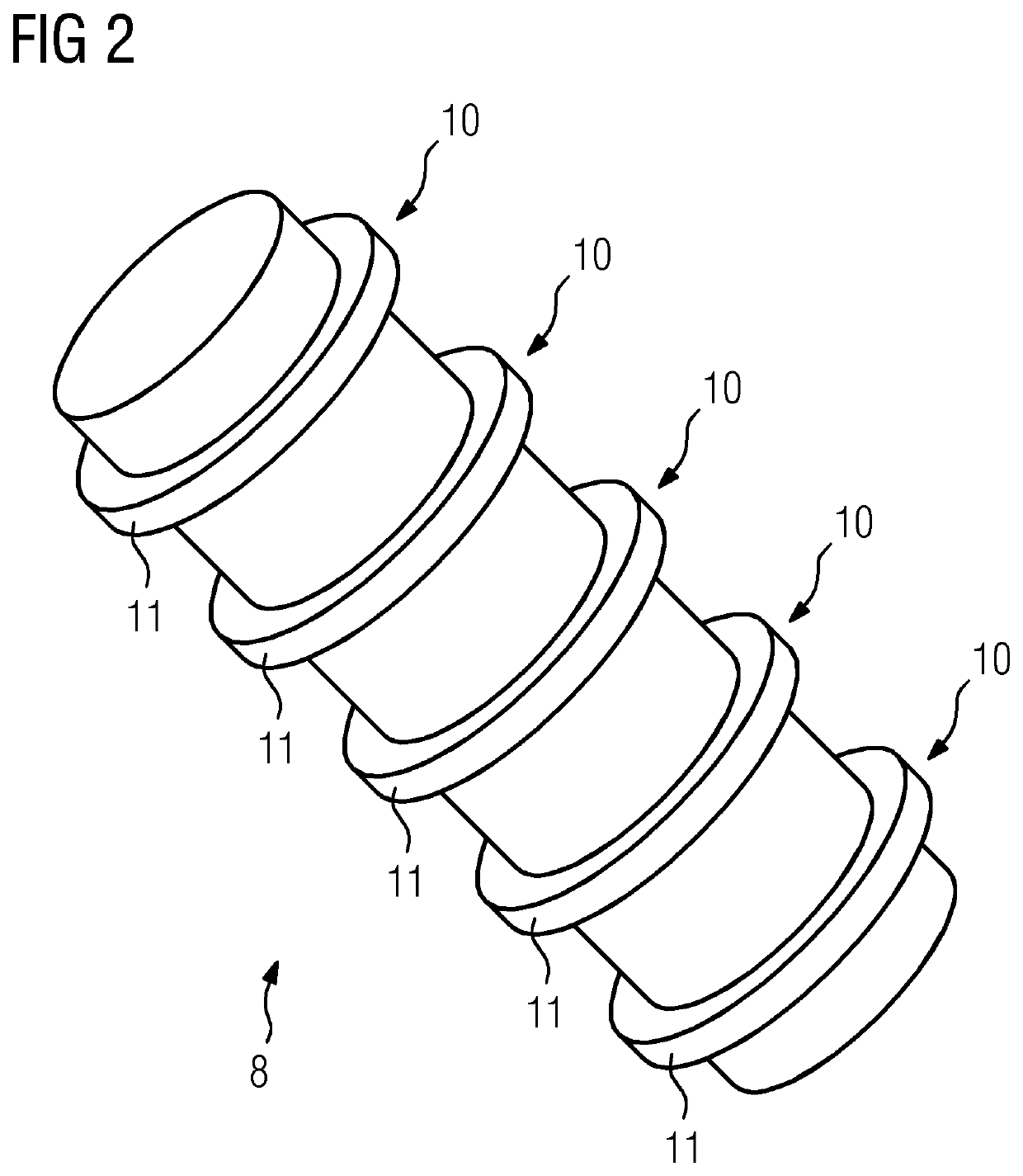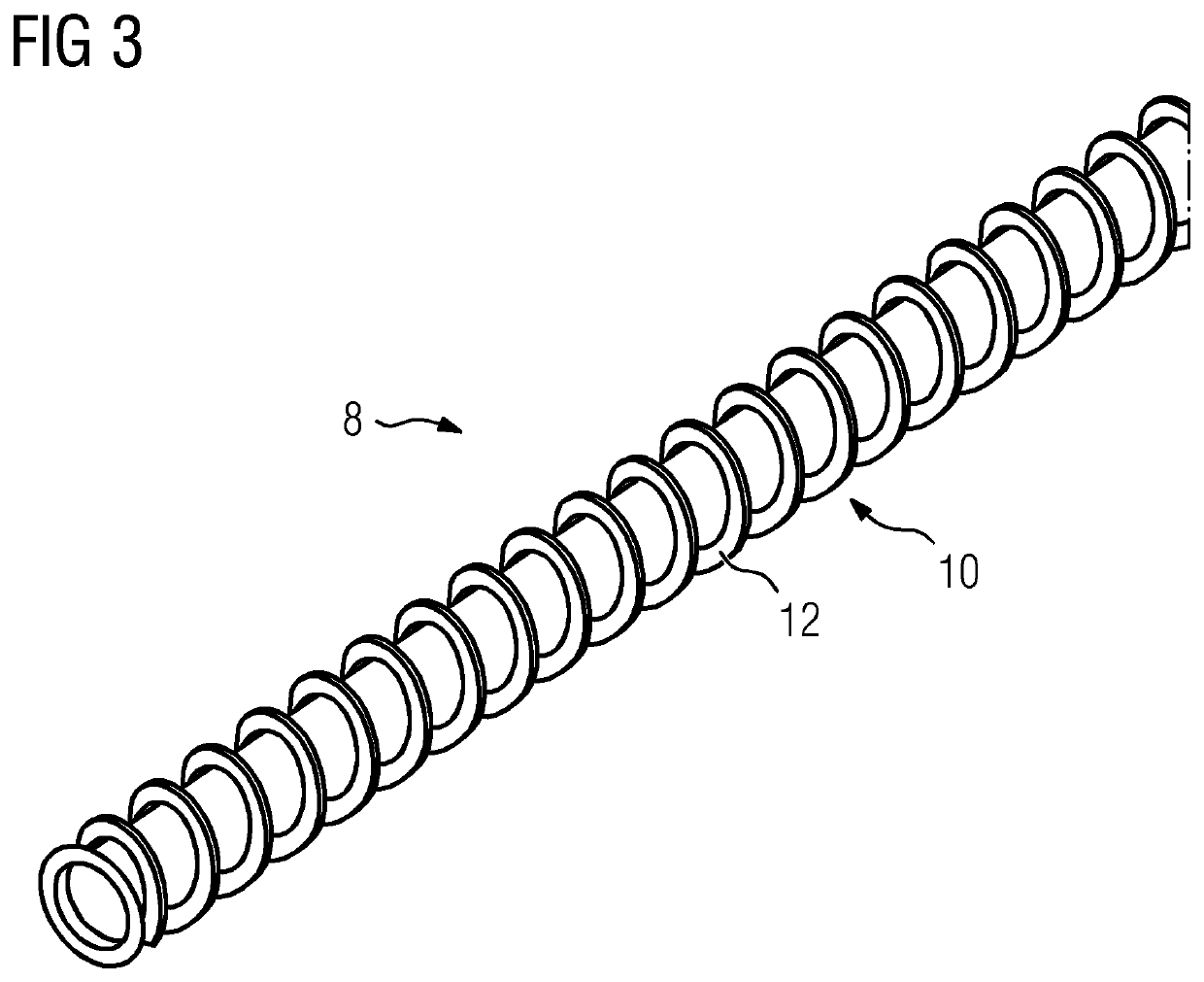Electric cable for a wind turbine and wind turbine
a technology for wind turbines and electric cables, which is applied in the direction of cables, insulated conductors, conductors, etc., can solve the problems of difficult cooling requirements of cables and inability to ensure efficient cooling of cables
- Summary
- Abstract
- Description
- Claims
- Application Information
AI Technical Summary
Benefits of technology
Problems solved by technology
Method used
Image
Examples
first embodiment
[0031]FIG. 2 shows a detailed view of the electric cable 8. Here, the cooling elements 10 are annular fins 11 extending along the circumference of the electric cable 8. The cross-sectional shape of each of the annular fins 11 is rectangular, meaning that the geometrical shape of each of the annular fins 11 is a ring or hollow cylinder of low height. Exemplarily, the height of the hollow cylinders forming the annular fins 11 is about 1 mm and the distance between two adjacent annular fins is about 10 mm.
second embodiment
[0032]FIG. 3 shows the electric cable 8, wherein the cooling element 10 is provided as a helical, circumferential fin 12 along the periphery of the electric cable 8. Exemplarily, the helical, circumferential fin 12 extends along the cable 8 continuously. Alternatively, several separate helical fins 12 can be provided each covering a certain longitudinal section of the electric cable 8. Even two or more parallel helical fins 12 can extend along the periphery of the electric cable 8, e.g. forming a double- or multiple helical structure.
[0033]Due to the twisted shape of the helical, circumferential fin 12, the cooling element 10 produces or increases turbulences and swirls of the air passing by the cable 8 which lead to an even higher cooling efficiency. Exemplarily, the gradient of the twisted structure of the helical, circumferential fin 12 is chosen such that at a length of 20 cm of the cable 8, the helical, circumferential fin 12 twists eight times around the cable 8.
[0034]FIG. 4 s...
PUM
 Login to View More
Login to View More Abstract
Description
Claims
Application Information
 Login to View More
Login to View More - R&D
- Intellectual Property
- Life Sciences
- Materials
- Tech Scout
- Unparalleled Data Quality
- Higher Quality Content
- 60% Fewer Hallucinations
Browse by: Latest US Patents, China's latest patents, Technical Efficacy Thesaurus, Application Domain, Technology Topic, Popular Technical Reports.
© 2025 PatSnap. All rights reserved.Legal|Privacy policy|Modern Slavery Act Transparency Statement|Sitemap|About US| Contact US: help@patsnap.com



